On Aug. 1 the New York Rangers made a seemingly inevitable move, buying out an overpriced asset in Kevin Shattenkirk in order to fit under the salary cap.
The New York native became an unrestricted free agent in 2017 and the Rangers inked him to a four-year deal worth $6.65 million per season. At that point, Shattenkirk was considered one of the premier offensive defencemen in the league, coming off a 2016-17 campaign split between the St. Louis Blues and Washington Capitals where he scored 13 goals and 56 points in 80 games. For that kind of production, his contract looked like a fair deal for the Rangers, who surely didn’t see such a swift and significant dropoff on the horizon. Shattenkirk went on to score just 7 goals and 51 points in 119 games over two seasons with the club.
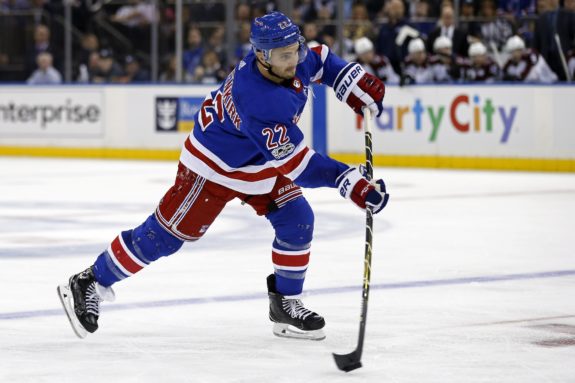
But when one door shuts, another often opens. In this case, the buyout created an opportunity for the Toronto Maple Leafs to potentially add a cheap upgrade for their paper-thin right defence.
Here’s the case for why the Maple Leafs should sign Shattenkirk, and why the 30-year old could be the final piece to complete their defence.
Maple Leafs’ Right Defence Needs Help
As it currently stands, the Maple Leafs have a very strong left side defence with Morgan Rielly, Jake Muzzin, and Travis Dermott (once healthy) all on the blue line. Unfortunately, the same cannot be said for their right side, where their only option above replacement level is Tyson Barrie. Of course, Dermott has shown the ability to play the right side at times, but he’s going to miss at least a month or two to start the season, and head coach Mike Babcock prefers to play his defencemen on their strong sides. That leaves Toronto with a likely lineup of Barrie, Cody Ceci, and either Jordan Schmaltz or Justin Holl to start the season on right defence. If you’re wincing right now, that’s probably the correct response.

Barrie is certainly an offensive dynamo and capable top-four defender, and his swashbuckling style seems like it would mesh well with the steady defensive play of Muzzin. That leaves Rielly to be partnered with Ceci to begin the season, and this is where things start to get messy.
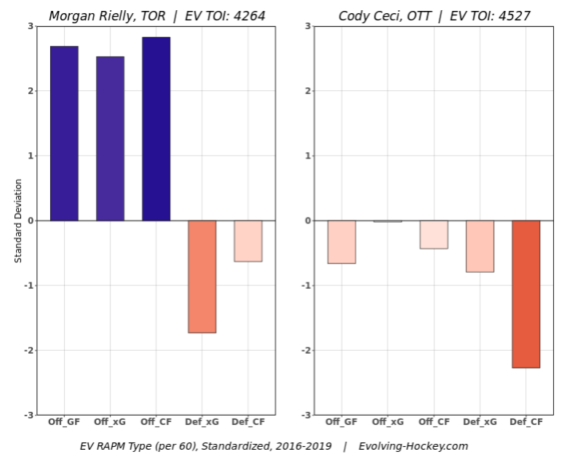
As most Maple Leaf fans are well aware, Rielly is not the strongest defensive player, but he makes up for that (and more) with his offensive contributions. Like Rielly, Ceci is extremely leaky on the defensive side, but unlike Rielly, he’s unable to make up for it offensively. Obviously being on a poor Ottawa Senators team hasn’t helped Ceci – and that may be the Maple Leafs’ reasoning for taking a chance on the 25-year-old – but he’s looked bad even compared to his teammates.

Last season, Ceci was the worst defenceman in the entire NHL when it came to Corsi against per hour (68.94). He was also second-worst in shots against per hour at 38.16. Notably, Rielly was 11th and fourth-worst in each of those categories, respectively, which would likely make for a nightmarish pairing.
Shattenkirk Can Still Play
Shattenkirk was bought out because of the Rangers’ cap situation – not necessarily because he can’t play anymore.
Last season, Shattenkirk scored just 28 points in 73 games, which sounds mediocre at best on the surface. When you look at his production per hour, though, he really wasn’t all that bad. With his 0.91 points per hour at 5v5, Shattenkirk ranked 72nd among defensemen, in the same neighbourhood as players like Miro Heiskanen, Dustin Byfuglien, John Klingberg, PK Subban, Alex Pietrangelo, and Seth Jones. Factoring in his production at all strengths, he looks even better: his 1.22 points per hour ranked 58th in the league, right behind Drew Doughty and Ryan Ellis. By all accounts, Shattenkirk can still produce like a top-four defenceman.
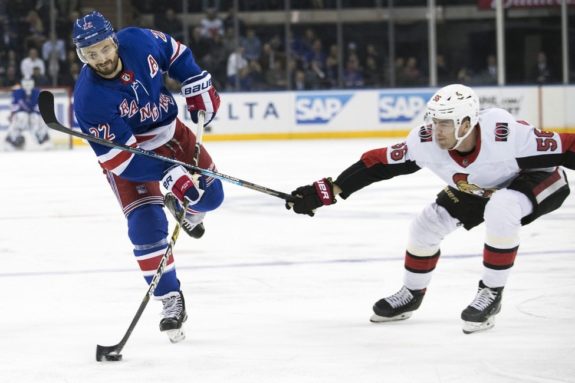
He can still score, fine. But if the Rangers let him go, he must be disastrous defensively, right?
Actually, Shattenkirk put up solid underlying numbers last season all things considered. His 49.59 CF% (Corsi for) and 50.75 xGF% (expected goals for) ranked first among Rangers defencemen at 5v5, and he was also first in both scoring chances and high danger scoring chances for. Where exactly did things go wrong then?
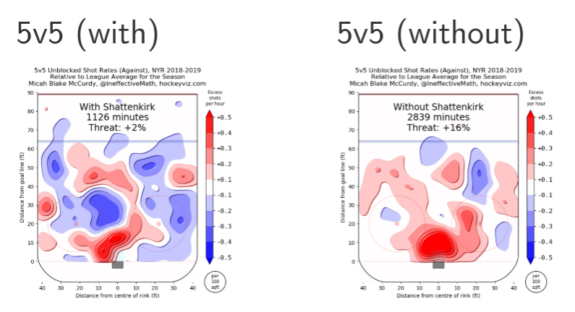
Sometimes players do all the right things but still don’t necessarily get rewarded for their efforts, and it seems like Shattenkirk was a victim of some bad luck more than anything else. His on-ice shooting was an abysmal 6.61 percent and Shattenkirk himself shot just 1.4 percent, well below his career average of 5.9. Further, he had the worst PDO among Rangers defencemen despite his ability to control shots and chances, which is clearly counterintuitive. This ultimately led to a poor GF% (goals for) mark of 45.24 – nearly five percent below his expected rate.
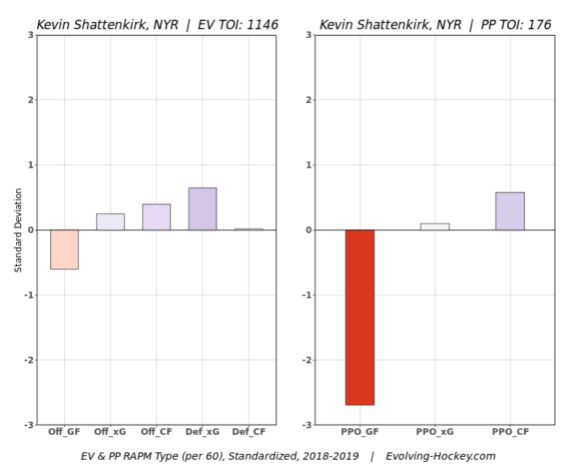
When we see a large disparity between goals for (Off_GF and PPO_GF) and expected goals for (Off_xG and PPO_xG), that’s usually a clear indicator that a player was either lucky or unlucky. In this case, all signs point to the fact that Shattenkirk was unfortunate not to score more last season, and he’s a prime candidate for a bounceback year.
Where Would Shattenkirk Fit?
The only question that the Maple Leafs need to ask is, “Would Shattenkirk be an upgrade over Cody Ceci in the No. 4 role?” and the answer is a resounding “Yes!”
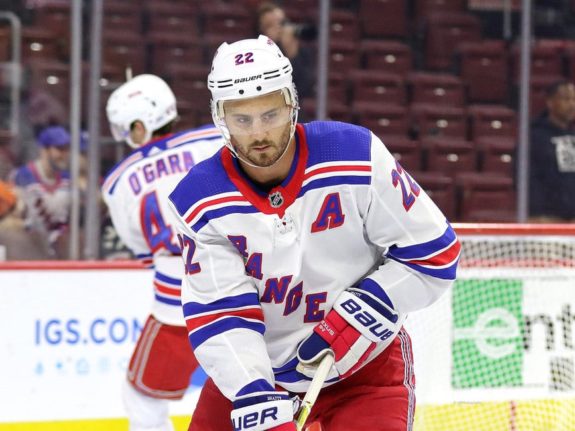
Shattenkirk is better than Ceci both offensively and defensively, and further, his cap hit would be a fraction of Ceci’s. At $4.5 million, it’s a bit of a head-scratcher that general manager Kyle Dubas chose to sign Ceci, but given Dubas’ analytical background, he likely has his reasons. Either way, Shattenkirk would almost certainly provide more value for less money.
It’s hard to predict what the 30-year-old defenceman may command coming off of a buyout, but it’s probably fair to assume that teams would be hesitant to give him much term given the circumstances. With that in mind, Shattenkirk is probably looking at a relatively cheap one-year “show me” deal which would allow the player to rebuild his value, while giving the team a low-risk, high-reward option.

We’ve seen Dubas make plenty of these signings already, bringing in potential bargains like Jason Spezza, Pontus Aberg, and Ilya Mikheyev who are all signed for under $1 million each. Bringing Shattenkirk in on a short-term deal seems like a perfect Dubas-type move, and would really take the Maple Leafs’ defence from questionable to respectable.
Player stats from http://www.hockeydb.com/ and http://www.naturalstattrick.com/